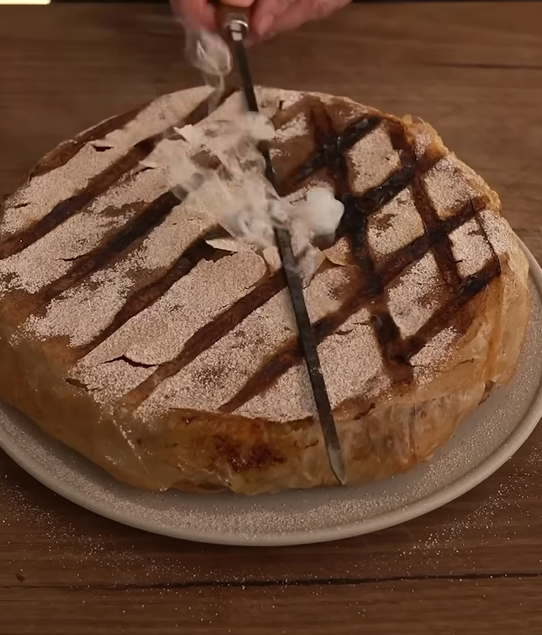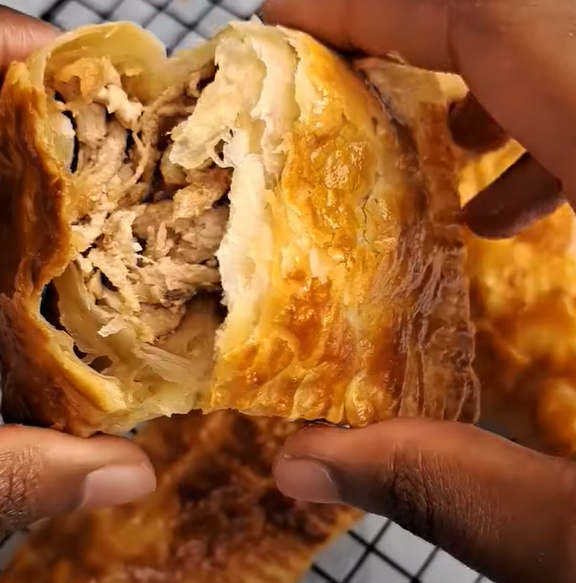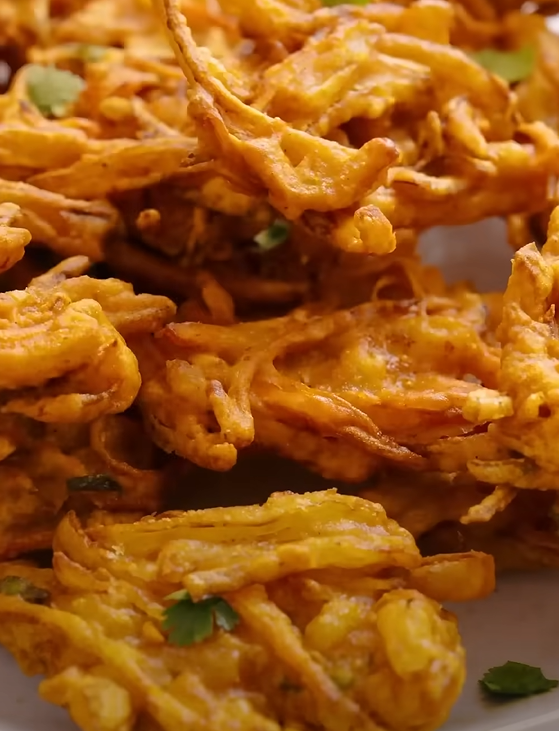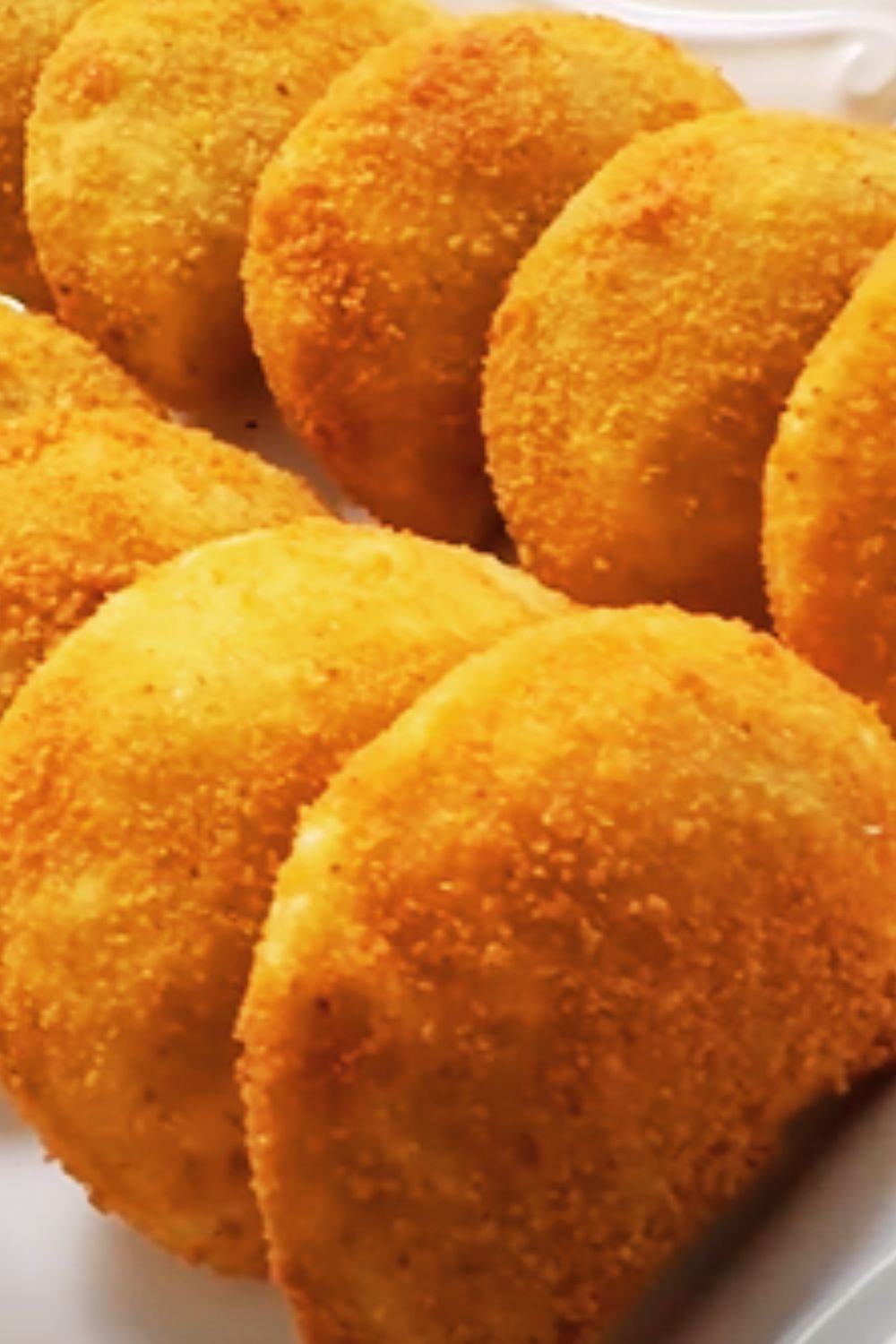When I first encountered Moroccan chicken pies during my culinary adventures, I was immediately captivated by their delicate balance of savory and sweet flavors wrapped in impossibly thin, buttery pastry. These aren’t just any ordinary pies – they’re edible works of art that tell the story of Morocco’s rich culinary heritage through every flaky layer and aromatic spice.
Moroccan chicken pies, traditionally known as “Bastilla” or “Pastilla,” represent one of the most sophisticated dishes in North African cuisine. My journey with these remarkable pies began in a bustling Marrakech kitchen, where I watched skilled cooks transform simple ingredients into something truly magical. The combination of tender spiced chicken, fragrant herbs, and delicate phyllo-like pastry creates an experience that transcends ordinary cooking.
What makes these pies extraordinary isn’t just their taste – it’s the centuries of tradition baked into every fold. I’ve discovered that mastering Moroccan chicken pies requires understanding not just the technique, but the cultural significance behind each ingredient and preparation method.
The Rich History Behind Every Bite
The origins of Moroccan chicken pies trace back to Andalusian Spain, brought to Morocco by refugees in the 15th century. Originally, these pies were made with pigeon, but chicken became the preferred protein as the dish evolved. I find it fascinating how this recipe represents a beautiful fusion of Spanish, Arab, and Berber culinary traditions.
In my research and cooking experiences, I’ve learned that these pies were traditionally served during special occasions and celebrations. The intricate preparation process made them a symbol of hospitality and culinary skill. Today, they remain a centerpiece at Moroccan weddings, religious holidays, and important family gatherings.
Essential Ingredients That Define Authenticity
Creating authentic Moroccan chicken pies requires understanding the role each ingredient plays in building layers of flavor. Through my extensive experimentation, I’ve identified the key components that separate exceptional pies from ordinary ones.
Protein Foundation:
- Chicken: I prefer using whole chicken pieces with bones for maximum flavor development
- Eggs: Fresh eggs bind the filling and add richness
- Almonds: Blanched almonds provide textural contrast and subtle nuttiness
Spice Symphony:
- Ras el Hanout: This complex spice blend forms the flavor backbone
- Saffron: Premium saffron threads create the distinctive golden color and delicate flavor
- Ginger: Fresh ginger adds warmth and complexity
- Cinnamon: Ground cinnamon bridges savory and sweet elements
- Turmeric: Enhances color and adds earthy depth
Aromatic Elements:
- Fresh Cilantro: Chopped cilantro brings brightness and freshness
- Fresh Parsley: Flat-leaf parsley adds herbaceous notes
- Onions: Yellow onions form the flavor base when properly caramelized
- Garlic: Fresh garlic cloves provide pungent depth
Pastry Components:
- Phyllo Dough: Ultra-thin sheets create the signature flaky texture
- Butter: High-quality unsalted butter for brushing and richness
- Powdered Sugar: Light dusting for traditional sweet finish
Nutritional Profile and Health Benefits
Understanding the nutritional aspects of Moroccan chicken pies helps me appreciate their place in a balanced diet. These pies offer more than just incredible taste – they provide substantial nutritional value when prepared thoughtfully.
| Nutrient | Amount per Serving | Daily Value % | Health Benefits |
|---|---|---|---|
| Protein | 28-32g | 56-64% | Muscle maintenance, satiety |
| Carbohydrates | 22-26g | 7-9% | Energy production |
| Fat | 18-22g | 28-34% | Hormone production, nutrient absorption |
| Fiber | 2-3g | 8-12% | Digestive health |
| Iron | 2.8-3.2mg | 16-18% | Oxygen transport, energy |
| Vitamin B6 | 0.6-0.8mg | 35-47% | Brain function, metabolism |
| Niacin | 8-10mg | 50-63% | Cellular energy production |
| Phosphorus | 220-260mg | 18-21% | Bone health, cellular function |
The spices used in these pies contribute significant antioxidant properties. Turmeric provides curcumin, known for its anti-inflammatory effects. Ginger aids digestion and has antimicrobial properties. Cinnamon helps regulate blood sugar levels, making these pies more than just a delicious treat.
Mastering the Art of Preparation
My approach to creating perfect Moroccan chicken pies involves several critical stages, each requiring attention to detail and patience. I’ve refined this process through countless attempts, learning from both successes and failures.
Stage 1: Chicken Preparation and Cooking
I begin by selecting high-quality chicken pieces, preferably a whole chicken cut into portions. The bones contribute essential flavor during the slow cooking process. My technique involves browning the chicken pieces first to develop deep, complex flavors before adding the aromatic base.
In a heavy-bottomed pot, I heat olive oil over medium-high heat and brown the chicken pieces on all sides. This crucial step creates the foundation flavors that permeate the entire dish. I remove the chicken and set it aside while preparing the aromatic base.
Stage 2: Building the Flavor Foundation
Creating the perfect aromatic base requires patience and attention to timing. I sauté finely diced onions until they become golden and translucent, usually taking 8-10 minutes over medium heat. The key is achieving proper caramelization without burning.
I add minced garlic and fresh ginger, cooking for another 2-3 minutes until fragrant. The spice blend comes next – I toast the ras el hanout, turmeric, and cinnamon for 30 seconds to awaken their essential oils. This technique dramatically intensifies the flavor profile.
Stage 3: Slow-Cooking Magic
Returning the chicken to the pot, I add just enough water or chicken stock to barely cover the pieces. The slow-cooking process typically takes 45-60 minutes, during which the chicken becomes fork-tender and the liquid reduces to a concentrated, flavorful sauce.
I monitor the cooking process carefully, adjusting heat as needed to maintain a gentle simmer. The chicken is ready when it easily falls off the bone and the cooking liquid has reduced by approximately two-thirds.
Stage 4: Filling Preparation
Once the chicken cools sufficiently for handling, I remove all bones and shred the meat into bite-sized pieces. The concentrated cooking liquid becomes part of the filling, providing moisture and intense flavor. I combine the shredded chicken with lightly beaten eggs, which will set during baking to bind the filling together.
Toasted almonds, roughly chopped, add textural interest and nutty flavor. I prefer toasting whole blanched almonds in a dry skillet until golden, then chopping them by hand for irregular pieces that distribute evenly throughout the filling.
Fresh herbs – cilantro and parsley – get folded in just before assembly to maintain their bright color and fresh flavor. The final seasoning adjustment ensures perfect balance of salt, spice, and aromatic elements.
Assembly Techniques for Professional Results
Assembling Moroccan chicken pies requires developing a feel for working with delicate phyllo dough. My technique has evolved through practice, and I’ve learned several tricks that ensure consistent, professional-looking results.

Phyllo Handling Mastery:
Working with phyllo dough demands respect for its fragile nature. I thaw frozen phyllo completely in the refrigerator overnight, then bring it to room temperature for 30 minutes before use. Keeping unused sheets covered with a damp towel prevents drying and cracking.
I brush each sheet lightly with melted butter, using a soft pastry brush in gentle, overlapping strokes. Too much butter makes the pastry heavy; too little results in dry, brittle layers. The goal is achieving even coverage without oversaturating.
Layering Strategy:
My layering technique involves alternating the grain direction of phyllo sheets to create maximum structural integrity. I use 6-8 sheets for the bottom layer, brushing each with butter and rotating 45 degrees with each addition.
The filling gets distributed evenly, leaving a 2-inch border around all edges. I avoid overfilling, which can cause bursting during baking and make sealing difficult. The top requires another 4-6 phyllo sheets, again brushed with butter and carefully sealed around the edges.
Sealing and Finishing:
Proper sealing prevents filling from leaking during baking. I fold the bottom pastry edges over the top layers, creating a secure envelope. A final brush with butter and light scoring of the top surface allows steam to escape while creating an attractive pattern.
Baking Perfection: Temperature and Timing
Achieving the perfect balance of crispy pastry and properly heated filling requires understanding your oven’s characteristics. My baking method has evolved through extensive testing with different temperatures and timing combinations.
I preheat my oven to 375°F (190°C), ensuring even heat distribution throughout the cavity. The pies go onto the middle rack, positioned for optimal air circulation around all surfaces.
The initial 25-30 minutes at this temperature sets the pastry structure and begins the browning process. I rotate the pies halfway through this period to ensure even coloring. The final 10-15 minutes may require covering with foil if the top browns too quickly while the interior finishes heating.
Internal temperature should reach 165°F (74°C) at the center when properly cooked. The pastry should be golden brown and crispy, with no soggy or undercooked areas. Resting for 10 minutes after baking allows the filling to set and makes slicing much cleaner.
Regional Variations and Personal Adaptations
My exploration of Moroccan chicken pies has revealed fascinating regional variations that reflect local preferences and available ingredients. Each variation offers unique characteristics while maintaining the dish’s essential character.
Fez-Style Variations: In Fez, I’ve encountered versions that include preserved lemons, adding a distinctive tangy brightness that cuts through the rich filling. Some cooks incorporate olives, creating additional flavor complexity and Mediterranean influences.
Coastal Adaptations: Along Morocco’s Atlantic coast, seafood variations replace chicken with fresh fish or shellfish. While not traditional, these adaptations demonstrate the recipe’s versatility and local ingredient utilization.
Modern Interpretations: Contemporary Moroccan cooks sometimes add roasted vegetables like bell peppers or zucchini, increasing nutritional content and adding color variety. I’ve experimented with these additions and found they work well when properly seasoned and not overused.
Serving Suggestions and Presentation
Proper presentation elevates Moroccan chicken pies from simple food to an memorable dining experience. My approach emphasizes visual appeal while honoring traditional serving customs.
I serve these pies warm, cut into wedges that showcase the beautiful layered pastry and colorful filling. A light dusting of powdered sugar provides the traditional sweet contrast, though this remains optional based on personal preference.
Complementary Dishes:
My preferred accompaniments include a fresh green salad dressed with lemon vinaigrette to balance the rich pastry. Moroccan-style cooked vegetables like glazed carrots or braised fennel provide additional flavors and textures.
Mint tea serves as the traditional beverage pairing, its refreshing qualities cleansing the palate between bites. Fresh fruit salad or orange segments provide a light, cleansing finish to the meal.
Sauce Options:
While traditional preparations don’t include sauce, I sometimes offer a small bowl of harissa mixed with olive oil for those who enjoy additional heat and complexity. A yogurt-based sauce with fresh herbs provides cooling contrast and additional protein.
Storage and Reheating Guidelines
Proper storage ensures these pies maintain their quality and safety for later enjoyment. My storage methods preserve both texture and flavor while preventing spoilage.
| Storage Method | Duration | Temperature | Quality Notes |
|---|---|---|---|
| Room Temperature | 2 hours | 70°F max | Best texture, limited time |
| Refrigerated | 3-4 days | 35-38°F | Cover tightly, some texture loss |
| Frozen (unbaked) | 3 months | 0°F | Wrap individually, excellent quality |
| Frozen (baked) | 1 month | 0°F | Texture changes, still edible |
Reheating Techniques:
My preferred reheating method involves the oven at 325°F (163°C) for 10-15 minutes, which restores some crispness to the pastry. Microwave reheating works for quick warming but produces softer pastry texture.
For frozen unbaked pies, I bake directly from frozen, adding 15-20 minutes to the standard baking time and covering with foil if browning too quickly.
Troubleshooting Common Issues
Through my extensive experience making these pies, I’ve encountered and solved numerous common problems that can affect the final result.
Soggy Bottom Pastry: This usually results from excess moisture in the filling or insufficient bottom heat during baking. I prevent this by ensuring the filling isn’t too wet and using a pizza stone or placing the pan on the oven’s bottom rack for the first 15 minutes.
Cracked Phyllo: Dry phyllo cracks during handling and baking. I keep unused sheets covered with damp towels and work quickly but gently. If phyllo does crack, I patch it with small pieces and extra butter.
Uneven Browning: Hot spots in ovens cause uneven coloring. I rotate pies halfway through baking and adjust oven racks if necessary. Covering overly brown areas with foil prevents burning while other areas finish cooking.
Filling Leakage: Improper sealing or overfilling causes this problem. I ensure adequate pastry borders and seal edges thoroughly with beaten egg wash when necessary.
Advanced Techniques for Expert Results
After mastering the basic preparation, several advanced techniques can elevate your Moroccan chicken pies to restaurant-quality results.
Spice Toasting: I toast whole spices before grinding them myself, creating fresher, more intense flavors than pre-ground alternatives. This extra step requires only a few minutes but dramatically improves the final dish.
Confit Preparation: For special occasions, I prepare chicken confit-style, cooking it slowly in its own fat with aromatics. This technique produces incredibly tender, flavorful meat that elevates the entire pie.
Phyllo Alternatives: When phyllo isn’t available, I make my own thin pastry using flour, water, oil, and patience. While time-consuming, homemade pastry offers superior flavor and the satisfaction of complete authenticity.
Cultural Significance and Modern Relevance
Understanding the cultural importance of Moroccan chicken pies enriches the cooking experience and connects us to centuries of culinary tradition. These pies represent more than food – they embody hospitality, celebration, and cultural identity.
In Morocco, preparing these pies for guests demonstrates respect and honor. The time-intensive preparation shows the cook’s dedication to providing the best possible experience. I try to maintain this spirit of generosity and attention to detail in my own cooking.
Modern interpretations adapt traditional recipes to contemporary dietary needs and preferences while respecting the dish’s essential character. Gluten-free phyllo alternatives, reduced-fat preparations, and vegetarian versions all demonstrate the recipe’s adaptability.
Questions and Answers
Q: Can I make Moroccan chicken pies ahead of time? A: Absolutely! I often prepare the filling 1-2 days in advance and store it covered in the refrigerator. The assembled pies can be frozen unbaked for up to 3 months. When ready to serve, bake directly from frozen, adding extra time as needed.
Q: What’s the best substitute for ras el hanout if I can’t find it? A: I create my own blend using equal parts cumin, coriander, cinnamon, and paprika, with smaller amounts of cardamom, cloves, and cayenne pepper. While not identical to authentic ras el hanout, this mixture provides similar complexity and warmth.
Q: How do I prevent the phyllo pastry from becoming soggy? A: The key is managing moisture content in the filling and ensuring proper baking technique. I drain excess liquid from the cooked chicken mixture and pre-bake the bottom pastry for 5 minutes before adding filling. This creates a barrier that prevents sogginess.
Q: Can I use other proteins instead of chicken? A: Traditional variations include lamb, beef, or even seafood in coastal regions. I’ve successfully made versions with turkey, duck, and even well-seasoned lentils for vegetarian options. The key is adjusting cooking times and spice levels appropriately.
Q: Why do some recipes include sugar or sweet elements? A: The sweet-savory combination is characteristic of Moroccan cuisine, reflecting historical influences from various cultures. The light dusting of powdered sugar and sometimes dates or dried fruits create complexity and balance that distinguishes these pies from purely savory preparations.
Q: How can I tell when the pies are properly cooked? A: I look for deep golden-brown color on the pastry surface and use an instant-read thermometer to ensure the center reaches 165°F (74°C). The pastry should sound crispy when tapped lightly, and no soggy areas should remain visible through the translucent phyllo layers.
Q: What’s the difference between bastilla and pastilla? A: These are simply different spellings of the same dish, with regional pronunciation variations. Some areas of Morocco favor one spelling over the other, but they refer to the identical preparation method and final result.
Q: How do I store leftover phyllo dough? A: I wrap unused phyllo tightly in plastic wrap and refrigerate for up to one week. For longer storage, I freeze it for up to 6 months. Thawing must be done slowly in the refrigerator to prevent condensation that can make the sheets stick together.
Creating authentic Moroccan chicken pies requires patience, practice, and respect for traditional techniques. My journey with this remarkable dish has taught me that the best results come from understanding not just the how, but the why behind each step. These pies represent a beautiful intersection of technique and tradition, offering both the satisfaction of mastering a challenging recipe and the joy of sharing something truly special with others.
The investment of time and effort in preparing these pies pays dividends in the incredible flavors and textures achieved. Each bite delivers layers of taste that unfold gradually, revealing the careful balance of spices, the tenderness of properly prepared chicken, and the delicate crispness of expertly handled pastry. This is cooking at its most rewarding – transforming simple ingredients through skill and patience into something truly extraordinary.


